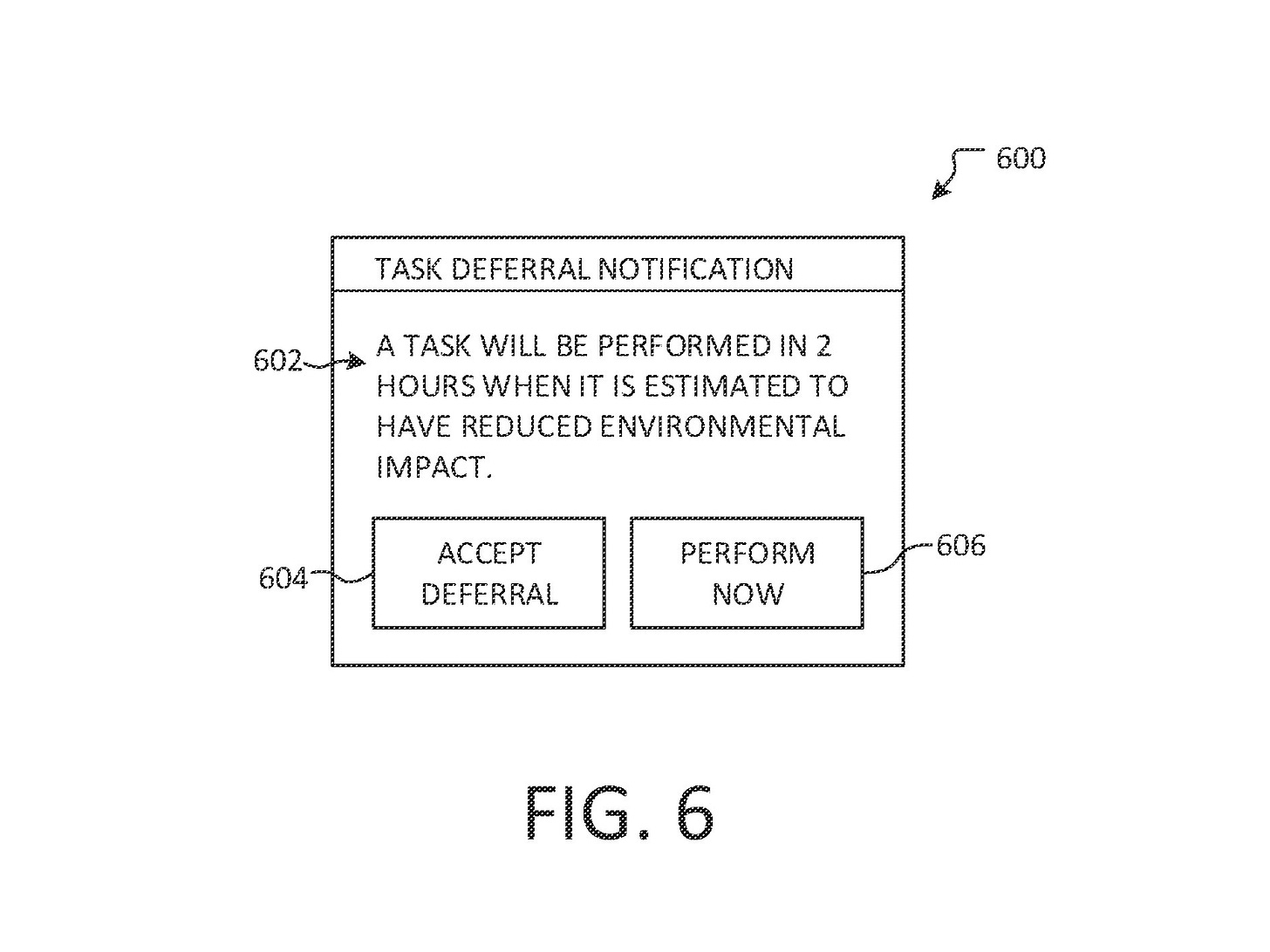For more crisp and insightful business and economic news, subscribe to The Daily Upside newsletter. It's completely free and we guarantee you'll learn something new every day.
Microsoft wants its computers to stop blowing through so much energy.
The company filed a patent application for a "sustainability-aware" system for device behavior management. The system would determine the actions taken by a computing device by considering their impact on the energy grid.
Microsoft's system first obtains what it calls "sustainability information" associated with an energy grid, such as how carbon-intense the action will be at a given time, and a variety of environmental factors, such as weather, temperature, and energy demand on the grid. It also collects and stores historical sustainability information.
With this information (and in some examples using an AI model), it churns out a sustainability forecast, and uses that forecast to manage device functionality by holding off on performing certain actions until they'd have a "comparatively lower environmental impact." The system also takes into account the tasks that need to be done and their priority when deciding what actions to put off. Microsoft said this avoids energy consumption during peak times which would have a higher environmental impact.
In practice, this could show up on the user end as a task scheduler requesting to put off downloads, software updates, backups or charging a device's battery. The sustainability forecast is updated periodically, and may change if the location of your device or IP address changes.
Along with reducing strain on the grid, Microsoft said its tech can manage behavior in a way that lengthens hardware lifespan, thereby avoiding e-waste and reducing carbon emitted in the manufacturing of a new device.

Microsoft is no stranger to environmental goals. On the patent side, the company filed an application for a carbon capture system that works to reduce emissions from its data centers. And carbon capture tech is just a piece of the company's ambitious goal to go carbon-negative by 2030, and remove the equivalent of its historical emissions by 2050.
While the patent details delaying actions such as downloading, charging and system updates that are typically associated with personal computers, inventions in patents are often intended to cover a far wider scope than the examples within them. With that in mind, Microsoft's tech could be put into practice in data centers, said Dr. Dan Stein, founder and director of climate giving consultancy Giving Green.
Microsoft's tech could hold off certain data center operations until times of day when clean energy is readily available, said Stein, whether it be from the energy grid or from its own sources of renewable energy. Given that data centers accounted for roughly 1.3% of energy consumption globally in 2022, according to the International Energy Agency, Microsoft keeping its own data centers in check in this way could help it make progress toward its broader goals.
"The idea is, if you could anticipate when there's going to be clean energy, and there are certain highly computational intensive tasks that you have a choice of when you're going to them, you would just do them at the right time," said Stein.
The question of how much this could help is still up in the air, said Stein, as some actions likely can't be delayed depending on safety and user demand times. However, Microsoft's filing is one example of a type of energy conservation that's being discussed and implemented far beyond tech companies, extending to household appliances, utilities and basically every other operation that uses up energy, said Stein.
"The energy nerds call it demand shaping," said Stein. "It's getting the demand to be when we have access to clean electricity."
Have any comments, tips or suggestions? Drop us a line! Email at [email protected] or shoot us a DM on Twitter @patentdrop. If you want to get Patent Drop in your inbox, click here to subscribe.
